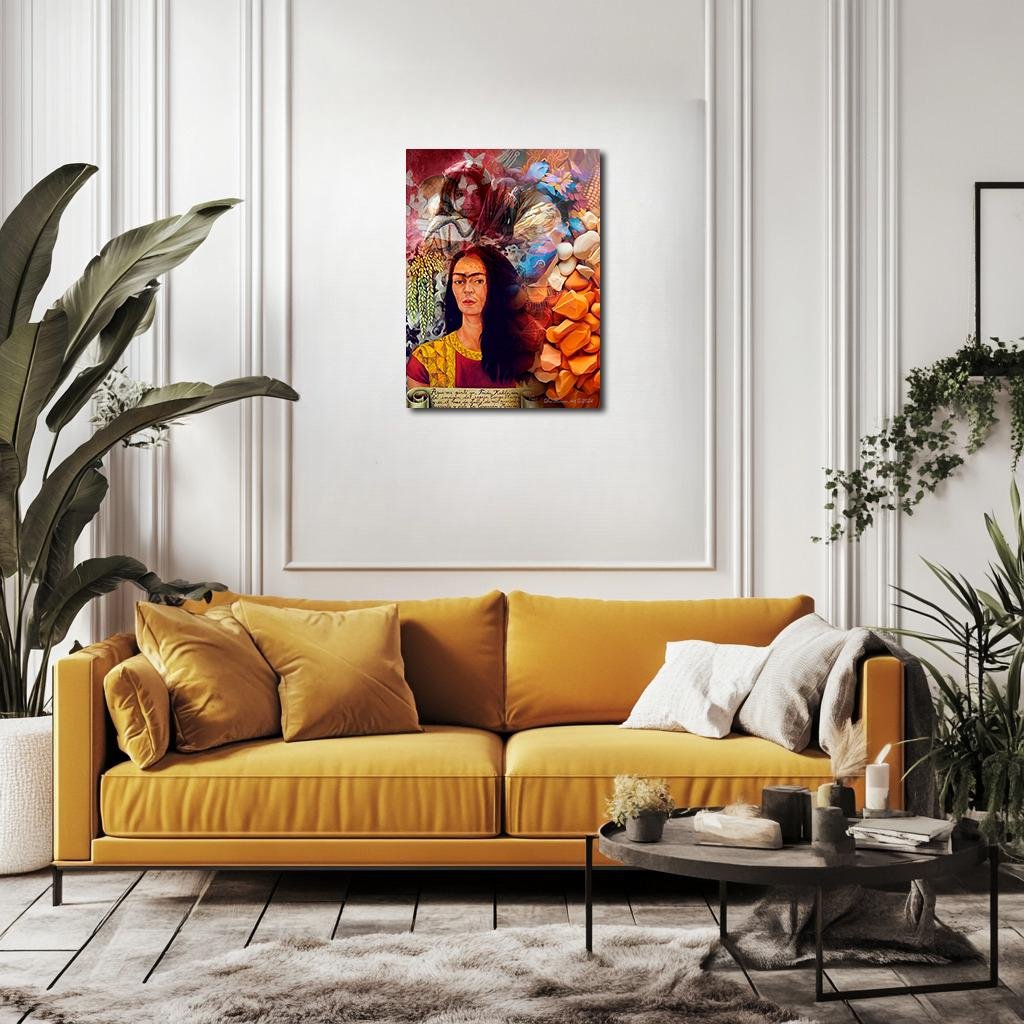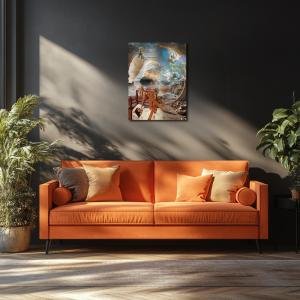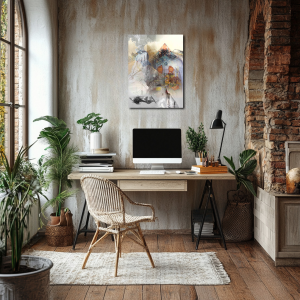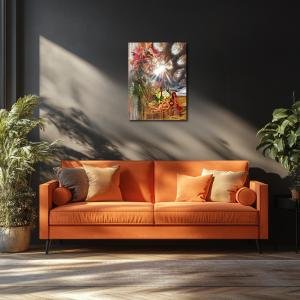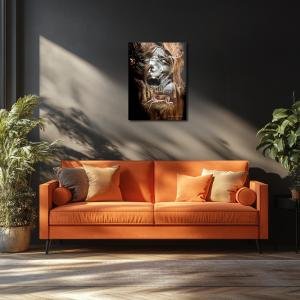Harvest of the Spirit: Frida’s Earthbound Reverie
Harvest of the Spirit reimagines Frida Kahlo’s Self-Portrait with Loose Hair as a layered dreamscape where body, earth, and memory weave together in endless renewal. Through rich terracottas, maize golds, deep carmines, smoky lilacs, and fleeting butterfly hues, Kahlo’s rooted figure becomes both the vessel and the harvest of her heritage. Amid swirling seeds, petals, and whispers of spirit, the piece honors Frida as a living bridge between suffering and survival, memory and becoming.
Please see Below for Details…
Hotline Order:
Mon - Fri: 07AM - 06PM
404-872-4663
This conceptual reimagining of Frida Kahlo’s Self-Portrait with Loose Hair deepens her self-exploration into a textured, sensory world where the body, spirit, and land intertwine in a perpetual act of creation and survival. Titled Harvest of the Spirit , the piece expands the original’s quiet assertion of identity into a lush, layered dreamscape where seeds, stones, butterflies, and blood-red memory converge, honoring Kahlo’s unbreakable bond to Mexico’s earth, myth, and inner endurance.
At the foundation of the composition stands Frida’s solemn figure, her face unflinching, her hair loose and flowing like black silk against the woven golden threads of her huipil. Her steady gaze captures the viewer with the full weight of unadorned truth—not staged, not softened, but held with fierce acceptance. Around her blooms an intricate garden of symbolic offerings: maize, beans, flowers, and seeds, the sacred elements of nourishment and survival that have sustained her people for centuries.
Above and behind her swirl ethereal layers of color and movement: a ghostly child’s face peer through crimson mist, butterflies scatter through folds of shadow and light, and bundles of dried herbs and vibrant petals weave into the air like prayers released from the soil. These floating fragments suggest that memory, culture, and personal history are not separate from the self—they are embedded within it, always flowering from the body like second skins.
The color palette of Harvest of the Spirit is a symphony of earthen resonance and spiritual illumination. Frida’s own figure is grounded in warm terracottas, golden ochres, and deep carmine reds, each hue drawn directly from the traditional textiles and sunburnt soils of Mexico. Her skin is painted with muted, lived-in tones of cinnamon and dusty rose, embodying a being who has been shaped by labor, suffering, and unyielding pride.
Threaded throughout the surrounding landscape are radiant patches of maize yellow, pale bone white, and burnt umber, creating a sense of abundance touched by time and weathering. The piles of seeds and husks in the right half of the composition speak not only to sustenance but to lineage—suggesting that every act of living is an inheritance, an echo of ancient cultivation and survival against all odds.
The dreamlike upper layer shifts into softer, cooler colors: muted lilacs, pale periwinkles, smoky indigos, and faded scarlets. These airy tones carry the sorrow and mystery of memory, suggesting that even as the body roots itself in earth, the spirit drifts through unseen fields of loss and transformation. The butterflies, glowing faintly against the mist, symbolize fleeting joys, metamorphosis, and the persistent longing for freedom that Kahlo wove through every fiber of her art.
Frida’s hair itself becomes a river, a flowing current pulling together the solidity of the earth and the vaporous realms of spirit. It blurs and weaves into the mist, threading through dried flowers and fallen petals, suggesting that identity is neither fixed nor separate from the world—it is nourished and shaped by everything it touches and carries.
When I created Harvest of the Spirit , I sought to honor the profound stillness and layered vitality within Kahlo’s Self-Portrait with Loose Hair . Frida painted herself not as a passive object but as a vessel of continuity: the breath of old earth and ancient blood moving forward through her. In this reimagining, I wanted the textures of life—food, stone, memory, flower, sky—to move through and around her, making visible the sacred interconnectedness she carried silently but fiercely in her bones.
The compositional rhythm spirals from the earth upward: from the tangible seeds and fields that ground the body, through the steady monument of Frida’s gaze, and into the misty, dream-filled air above. The movement is both rooted and ascending, suggesting that true endurance is not found in escape but in embracing both the soil that binds and the dreams that lift.
In this vision, Frida Kahlo is not merely the painter or the painted; she is the harvest itself—the living, breathing product of grief, resilience, memory, and fierce belonging.
Add your review
Your email address will not be published. Required fields are marked *
Please login to write review!
Looks like there are no reviews yet.

